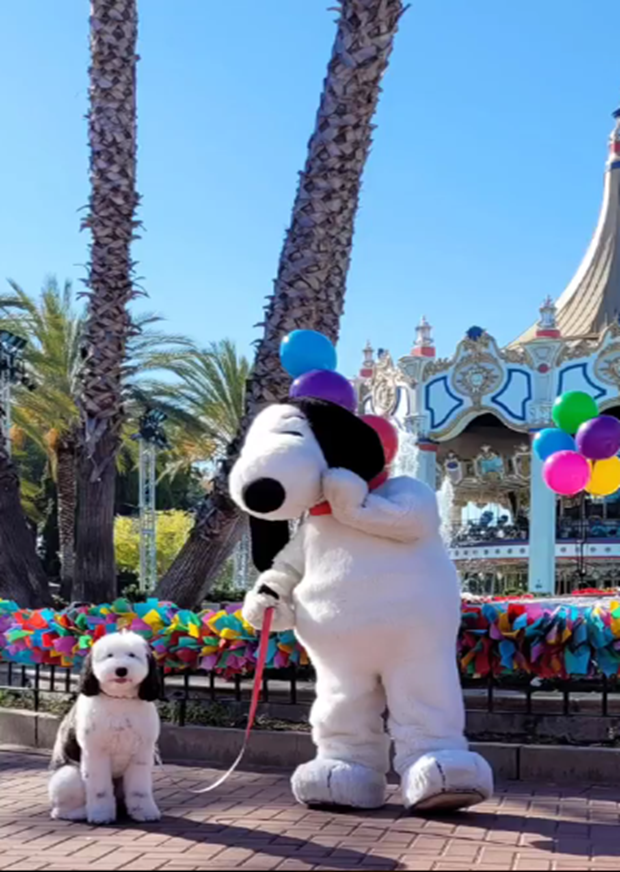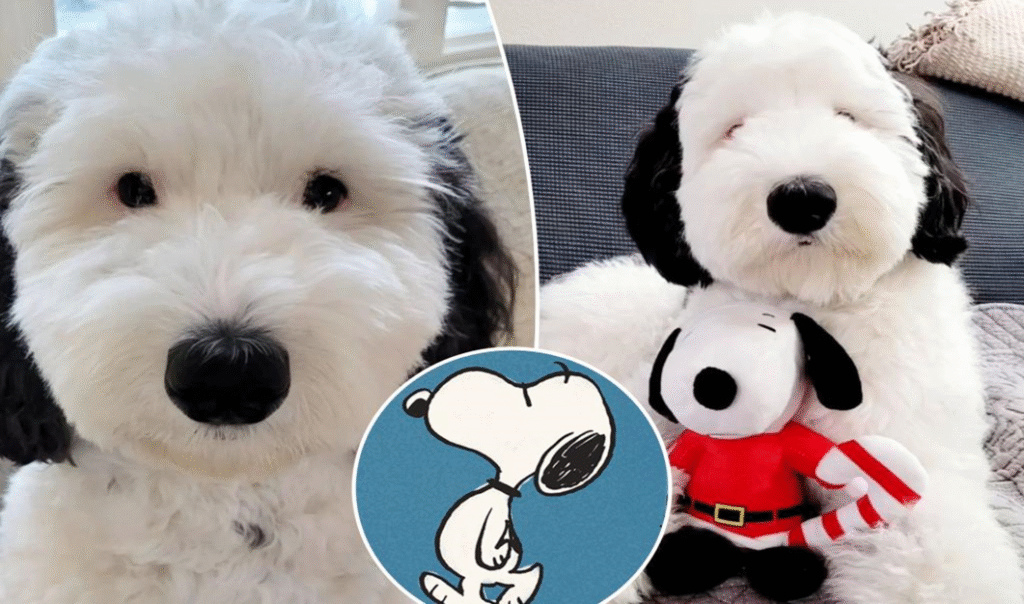The minute he walked into the shelter, the staff knew two things about the scruffy terrier mix: he had the saddest, most soulful eyes in the world, and he was absolutely impossible to name. He was a perfect, messy arrangement of white, tan, and scruff, with ears that stood up like perpetually surprised antennae. He was friendly enough, but carried himself with a low-slung, deeply philosophical sigh, as if the weight of the universe rested entirely on his knobby little shoulders.
They tried “Winston,” “Barnaby,” and even “Chip,” but nothing stuck. He just looked at them with that profoundly disappointed expression and refused to acknowledge any name.
Then, Sarah, the youngest volunteer, was scrolling through old cartoons on her phone during a lunch break and happened upon a classic image from a beloved 80s/90s animated series. She dropped her sandwich.
“Oh my gosh,” she whispered, grabbing Brenda, the manager, by the sleeve. “Brenda, look. Look at him.”

Brenda glanced from the image of the famous, perpetually miserable, world-weary cartoon pup—the one who always seemed to be muttering about how nothing ever worked out—to the actual dog sitting patiently by the fence. .
The resemblance was uncanny. The slump of the shoulders, the perpetually furrowed brow, the specific way his ears folded in on themselves to suggest an impending tragedy, even the exact shade of scruffy tan around his muzzle. It was perfect.
“He’s… he’s the cartoon come to life,” Brenda breathed, fighting a laugh.
They decided to call him Marvin, after his cartoon doppelgänger. Marvin, the real dog, still didn’t respond with any enthusiasm, but he didn’t actively disapprove, which, for him, was a ringing endorsement.
Marvin was an adorable dog, but he had been sitting in the shelter for three weeks without serious interest. People loved his sweet nature but, perhaps intimidated by his profound lack of cheer, kept walking past. Brenda knew Marvin was a brilliant, gentle dog who just needed the right hook to find his home.
That afternoon, she took a photo. It wasn’t staged; it was just Marvin doing what Marvin did best: sitting at the entrance of his run, head bowed slightly, contemplating the injustice of the shelter’s squeaky floor. Brenda quickly cropped the photo and put it side-by-side with a screenshot of his cartoon twin.
The caption simply read: “We named him Marvin. He just arrived. We’re pretty sure he thinks the world is ending. (Swipe left to see why he’s going viral.)”
She posted it across the shelter’s social media pages.
The response was immediate and overwhelming. Within an hour, the post had thousands of shares. People tagged their friends, reminiscing about the cartoon. Commenters wrote things like: “He has the soul of a retired philosophy professor,” and “He needs to be adopted by someone who appreciates existential dread in canine form.”
Marvin went from being a sweet, overlooked mutt to an internet sensation overnight. The shelter’s phone lines jammed.
The next morning, the line of potential adopters stretched halfway down the block. Everyone wanted to meet “Marvin the Cartoon Dog.” Marvin, naturally, hated the crowds. He sat in his kennel, observing the chaos with his usual look of tired resignation.

Many people came and went. They took photos. They laughed at the sign Brenda had jokingly put up: “Caution: May complain about the economy.” But when they took him out for a walk, he was still a little too quiet, a little too reserved. They wanted the hilarious internet meme; they didn’t quite connect with the shy, thoughtful dog beneath the viral image.
Then, late that afternoon, a young man named Alex arrived. Alex wasn’t interested in the meme. He was a software engineer who worked from home and was known for his calm, quiet, slightly melancholy demeanor. He carried a gentle weariness that matched Marvin’s perfectly.
He asked to sit with Marvin in the quiet “meet-and-greet” room. Marvin walked in, gave the room a weary, comprehensive survey, and immediately flopped onto the cool concrete floor, sighing a big, dramatic sigh.
Alex sat down beside him, cross-legged, and didn’t speak. He just sat. Five minutes passed in complete silence, broken only by Marvin’s intermittent, existential sighs.
Finally, Alex reached out a hand, very slowly, and scratched Marvin lightly behind the ear, a spot where the fur was thickest. “Tough day, huh, buddy?” Alex murmured.
Marvin stopped sighing. He didn’t jump up or lick Alex’s hand. He simply rested his entire head right on Alex’s thigh, closed those soulful eyes, and made a small, satisfied, ggrr-hum sound that was a million miles away from a bark or a meow. It was the sound of recognition. It was the sound of a dog who finally found a kindred spirit who understood the burdens of the world.
The adoption was approved quickly. Marvin, now officially Alex’s Marvin, left the shelter not with a bounce, but with a serene sense of acceptance, as if his long-awaited ride had finally arrived.
At Alex’s apartment, Marvin discovered the joy of an entire sofa dedicated to existential contemplation. He received only the most respectful, well-timed head scratches. Alex never treated him like a joke or a meme; he treated him like a roommate who was also a very good listener.

And that’s when the real glow-up began. The constant anxiety that had fueled his grumpy cartoon persona started to melt away. He still had the “forever disappointed” face, but now, it was framed by genuine contentment. He started trotting on walks. He began to lean into cuddles. He even started to wag his tail—a subtle, quiet swish that signaled internal joy rather than frantic excitement.
The new pictures Alex posted online were even more viral than the first. They showed Marvin, still looking like the iconic cartoon pup, but now he was fast asleep on a velvet cushion, his head resting peacefully, his entire body relaxed. .
The new caption: “Marvin is still worried, but mostly about missing his nap window.”
The true story of Marvin wasn’t just about a funny resemblance. It was about how a dog, burdened by the world, found his person—the one who understood that sometimes, the most profound love begins not with a burst of energy, but with a quiet, shared sigh.



